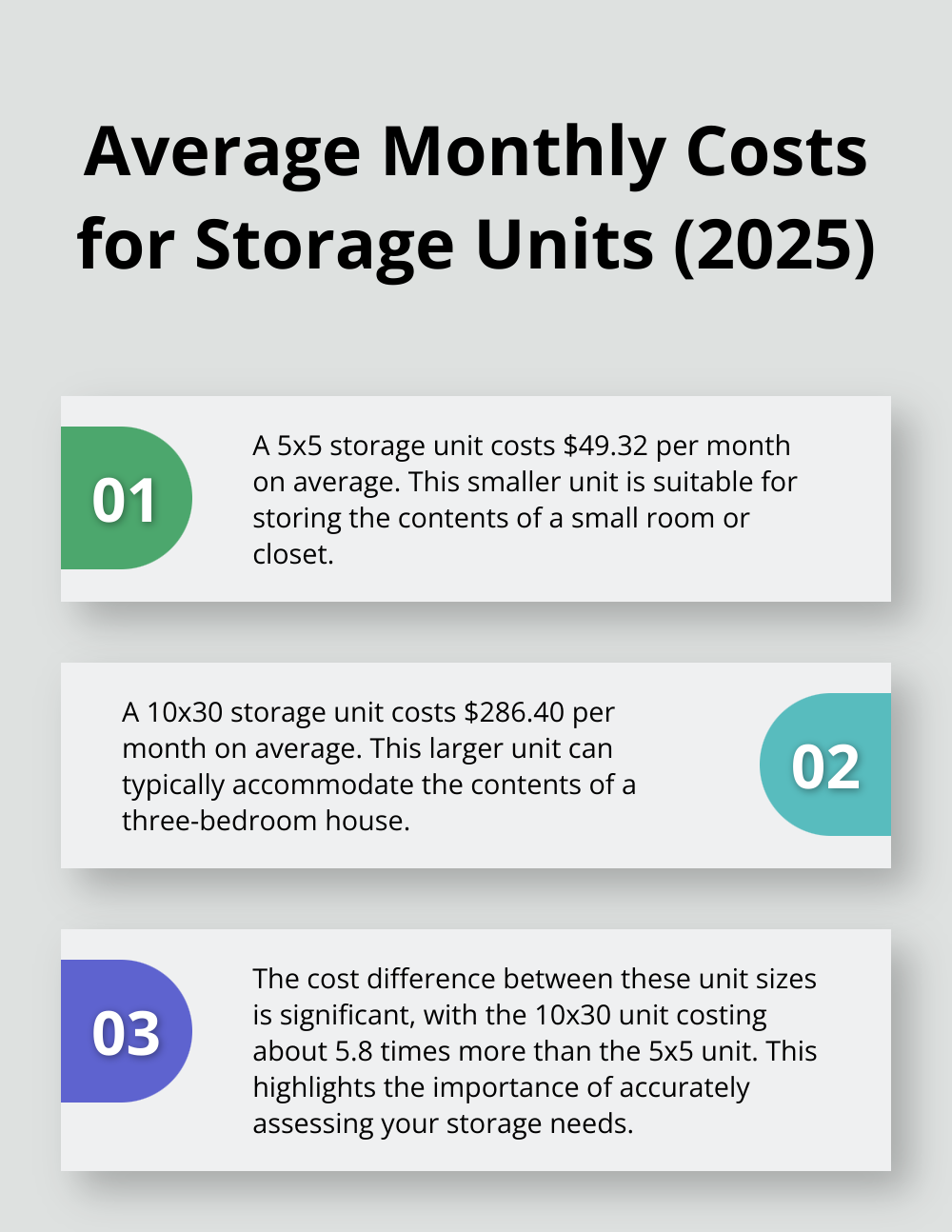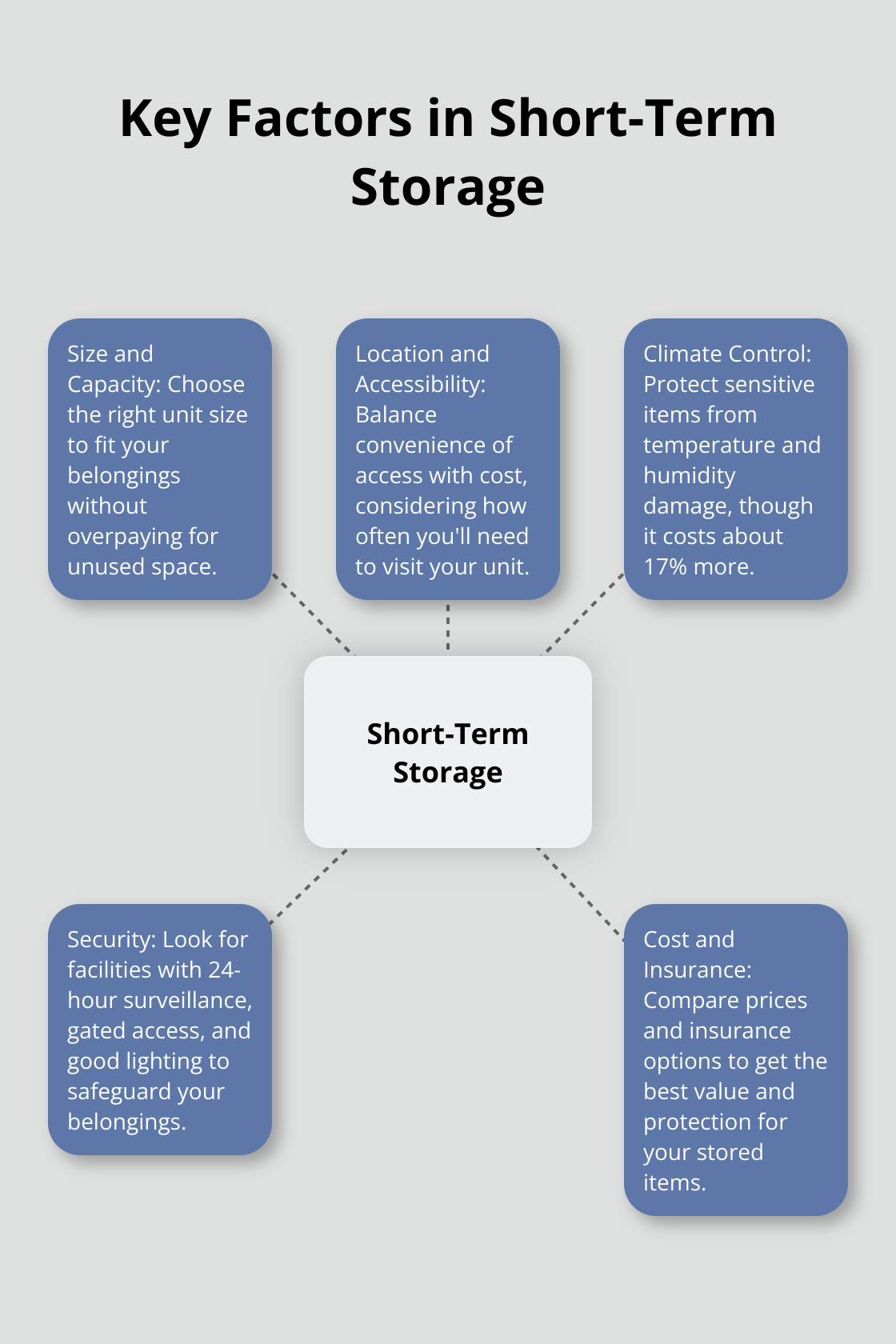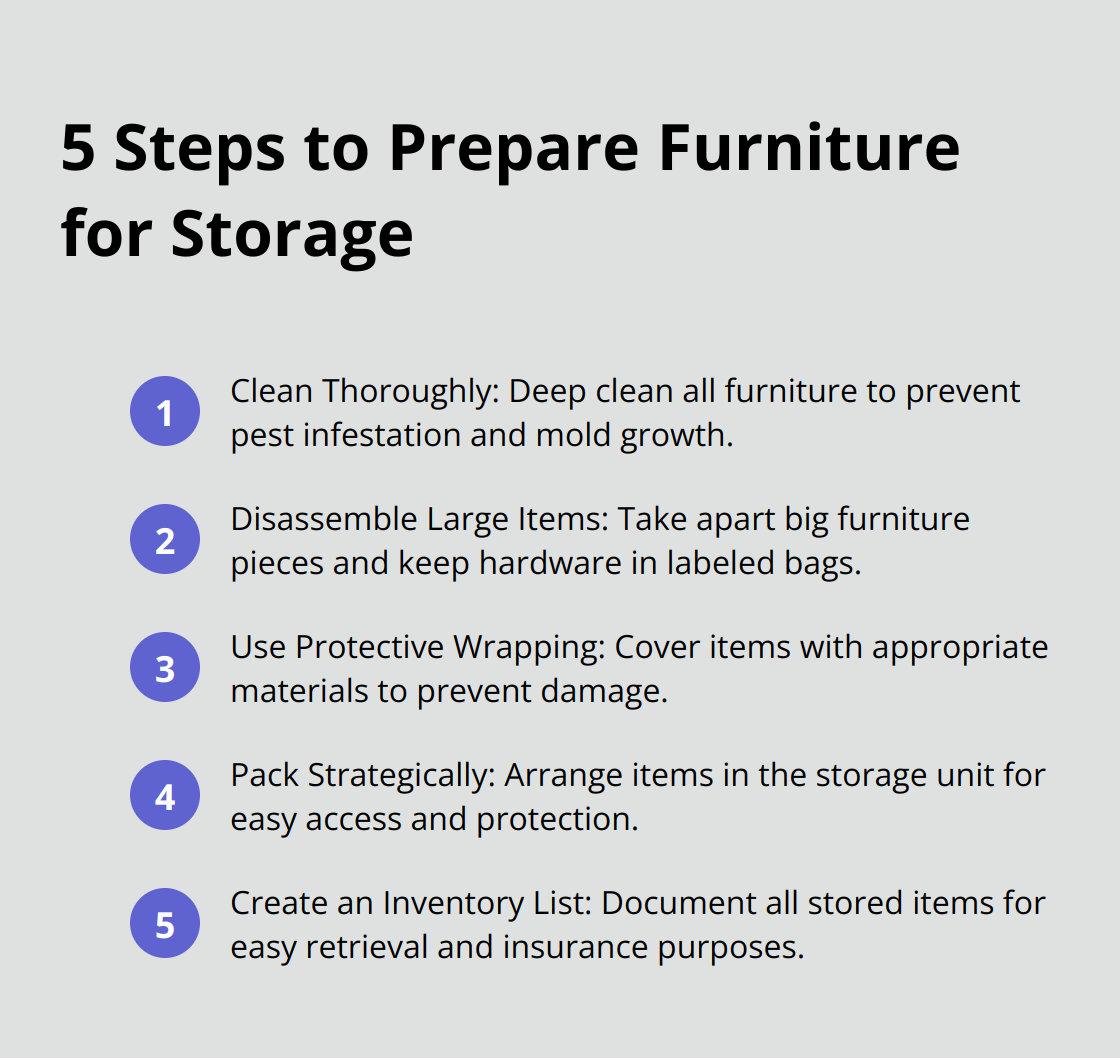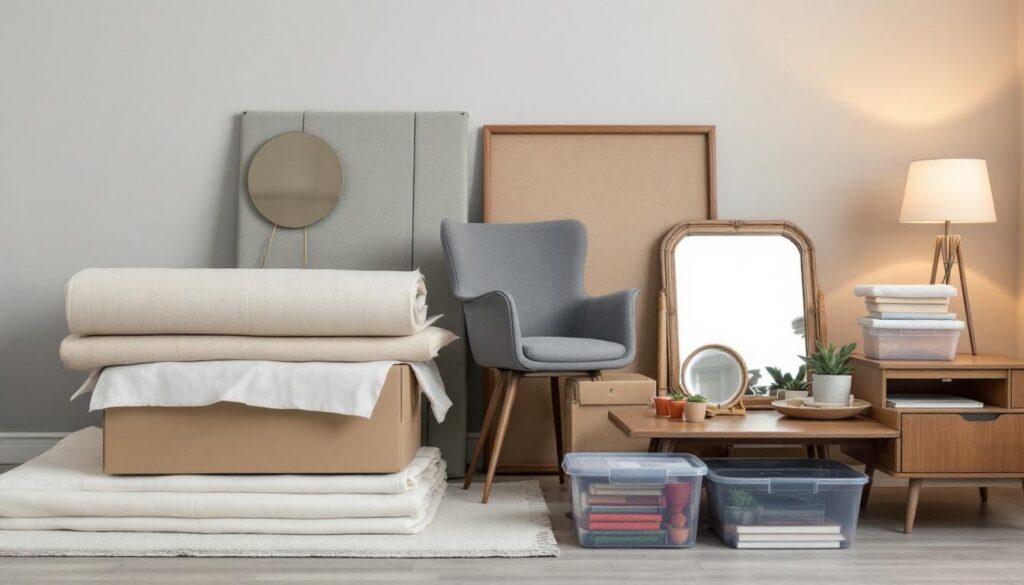Moving or renovating often requires short-term furniture storage solutions. At Southbay Moving Systems, we understand the challenges of finding the right storage option for your needs.
This guide will explore various short-term furniture storage choices, factors to consider when selecting a storage solution, and tips for preparing your belongings for temporary safekeeping.
What Are Your Short-Term Furniture Storage Options?
Self-Storage Units: The DIY Approach
Self-storage units offer complete control over your belongings. These facilities provide various unit sizes, typically ranging from 5×5 feet to 10×30 feet. A 2025 report by Extra Space Storage reveals that the average monthly cost for a 5×5 unit is $49.32, while a 10×30 unit averages $286.40. This option suits those who need frequent access to their items or prefer to manage the moving process themselves.
On-Demand Storage: The Convenience Factor
On-demand storage services have become increasingly popular. A third of Americans are now relying on self storage to manage their extra belongings, according to StorageCafe’s annual survey on renter demand and habits. These companies pick up your items, store them in their warehouse, and return them when you need them. This option eliminates the need to rent a truck or make multiple trips to a storage facility. While convenient, it often costs more than traditional self-storage (with prices varying based on the volume of items stored).
Moving Company Storage: The All-in-One Solution
Many moving companies offer storage solutions as part of their services. This option benefits those undertaking long-distance moves or dealing with gaps between move-out and move-in dates. Southbay Moving Systems, for example, provides a secure 20,000 sq. ft. storage facility, ensuring your furniture remains safe and easily accessible. This integrated approach can streamline your moving process and potentially save you money on separate storage costs.

Portable Storage Containers: Flexibility at Your Doorstep
Portable storage containers (like those offered by PODS) provide a flexible solution. These containers arrive at your home, allowing you to pack at your own pace. Once filled, you can store the container on your property or at a secure facility. Move.org recognizes PODS as the No. 1 moving and storage container company of 2024. This option combines the convenience of on-site storage with the security of off-site facilities.
Choosing the Right Option
Your specific needs, budget, and timeline will determine the best short-term furniture storage solution for you. Consider factors such as accessibility, security, and cost when making your decision. The next section will explore these factors in more detail, helping you make an informed choice for your furniture storage needs.
What Factors Matter Most in Short-Term Storage?
Size and Capacity: The Right Fit
Accurate space assessment is critical for short-term storage. A 5′ x 10′ unit (about 600 cubic feet) typically fits the contents of a one-bedroom apartment. Larger homes require a 10′ x 15′ unit (around 1,200 cubic feet), suitable for a three-bedroom house. Overestimating leads to unnecessary costs, while underestimating can damage your furniture due to cramped conditions.
Location and Accessibility: Convenience vs. Cost
Storage unit location affects both cost and convenience. Urban areas offer easier access but at higher prices. For example, a 10×20 drive-up unit in Chicago averages $301.15 per month (according to CubeSmart data). Consider how often you’ll need to access your items. If you require frequent visits, prioritize a nearby facility with flexible hours, even if it costs more.
Climate Control: Protecting Your Investment
Climate-controlled units maintain temperatures between 55 and 80 degrees, which protects sensitive items like wooden furniture, electronics, and antiques. These units cost about 17% more than standard units (averaging between $117 and $290 per month). This extra cost prevents expensive damage from extreme temperatures and humidity.
Security: Safeguarding Your Belongings
Security is paramount in short-term storage. Look for facilities with 24-hour video surveillance, gated access, and well-lit surroundings. Some storage companies (like Extra Space Storage) require proof of insurance, which adds an extra layer of protection for your belongings.
Cost and Insurance: The Full Picture
Storage costs vary based on location, size, and features. Monthly prices for standard units range from $35 to $100, while climate-controlled options can reach up to $290. Don’t forget to factor in insurance costs. Many facilities offer insurance options, but it’s worth comparing these with your existing homeowner’s or renter’s insurance to find the best coverage at the most reasonable price.

The next chapter will guide you through the process of preparing your furniture for short-term storage, ensuring your items remain in pristine condition throughout their time in storage.
How to Prepare Furniture for Short-Term Storage
Clean Thoroughly
Start with a deep clean of your furniture. For wooden pieces, try wiping it down with a mixture of warm water and dish soap with a soft cloth. Vacuum upholstered items thoroughly and consider steam cleaning to remove deep-seated dirt and odors. This cleaning process preserves your furniture and prevents the spread of pests or mold in storage units.
Disassemble Large Items
Take apart large furniture items before storage. Take photos before and during disassembly: This visual record will be invaluable when it’s time to reassemble. Keep all hardware together: Store screws, bolts, and other small parts in labeled plastic bags and secure them to the corresponding furniture piece.
Use Protective Wrapping
Invest in high-quality packing materials for optimal protection. Avoid plastic wrap for wood furniture as it can trap moisture and lead to warping. Use breathable materials like moving blankets or cotton sheets instead. For upholstered items, consider specially designed furniture covers. Wrap glass surfaces with bubble wrap and mark them as fragile.
Pack Strategically
When loading your storage unit, place larger, heavier items at the back and stack lighter items on top. Use furniture pads or old blankets between pieces to prevent scratches. Don’t stack items directly on upholstered furniture to avoid permanent indentations. Create pathways in your unit for easy access to items you might need frequently.
Create an Inventory List
Make a detailed inventory list of all items going into storage. Include descriptions, conditions, and even photographs of valuable pieces. This list helps with insurance claims if needed, makes retrieval easier, and ensures you don’t forget about stored items. Try inventory management apps (such as Sortly or Home Contents) for easy updating and access.

Final Thoughts
Short-term furniture storage solutions require careful consideration of your specific needs. Each option, from self-storage units to professional services, offers unique benefits. You should assess your requirements for size, accessibility, climate control, and security while balancing these factors with your budget.
Proper preparation protects your furniture during storage. Thorough cleaning, strategic disassembly, and appropriate packing materials safeguard your belongings from damage. A detailed inventory ensures you can easily locate and retrieve items when needed.
Professional services can provide significant advantages for both moving and short-term furniture storage. Southbay Moving Systems offers a seamless experience with expertise in customized relocation services and secure storage facilities (with a 20,000 sq. ft. storage space). They handle everything from packing to safe storage, which eliminates the stress of coordinating multiple services.




